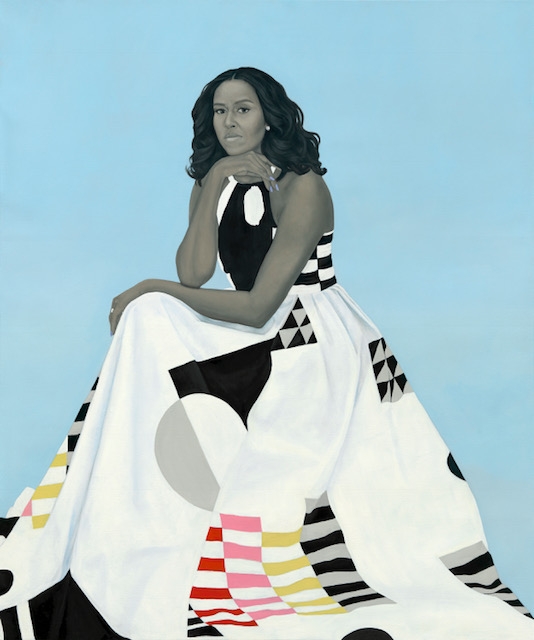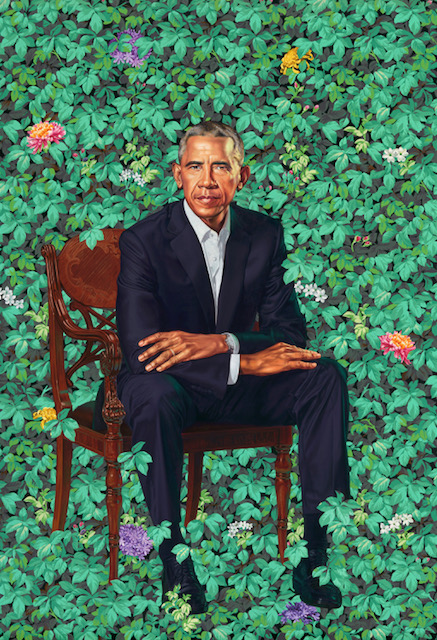Presidential Portraits
Sherman, who won the National Portrait Gallery’s Outwin Boochever Portrait Competition in 2016, tends to paint black subjects, usually in grayscale in front of a color-saturated background, in clothes she chooses carefully for each subject. The gray skin lets Sherald “omit” skin color from her paintings entirely, she says, separating race from color and allowing her subjects to hover in the liminal space between reality and dreamworld.
In the portrait, Michelle Obama reclines against a gray-tinted blue background, in what looks like a nod to the time she shook the 2012 Democratic National Convention by showing up with blue-gray nails. (Her nails are blue in this portrait too.) She’s wearing a geometric printed gown by Milly, which, ArtNet says, is meant to evoke the geometric quilts made by the black artists of the remote Alabama community Gee’s Bend.
The former first lady’s gaze is steady and direct, her hair loose around her face, and her pose is framed by her bare arms. It’s not a cheesecake pose, but it’s embodied and physical in a way that’s unusual for this kind of portrait; you get why her husband thanked Sherald for capturing Michelle Obama’s grace, beauty, intelligence, and charm — and also her hotness.
Paired together, the two portraits are immensely striking: Not only are they both unusually active for this kind of portrait, but they give off a palpable sense of intelligence, directness, and — perhaps more than anything else — cool. They’re portraits whose subjects care about aesthetics, who are thoughtful about the history of portraiture, and who have the personal charisma to carry the weight of that history on themselves.
Which is important, because history is going to weigh heavily on the portraits of the first black president and first lady, painted by the first black artists commissioned to makethe official presidential portraits.
By Constance Grady, VOX @constancegrady Feb 12, 2018

